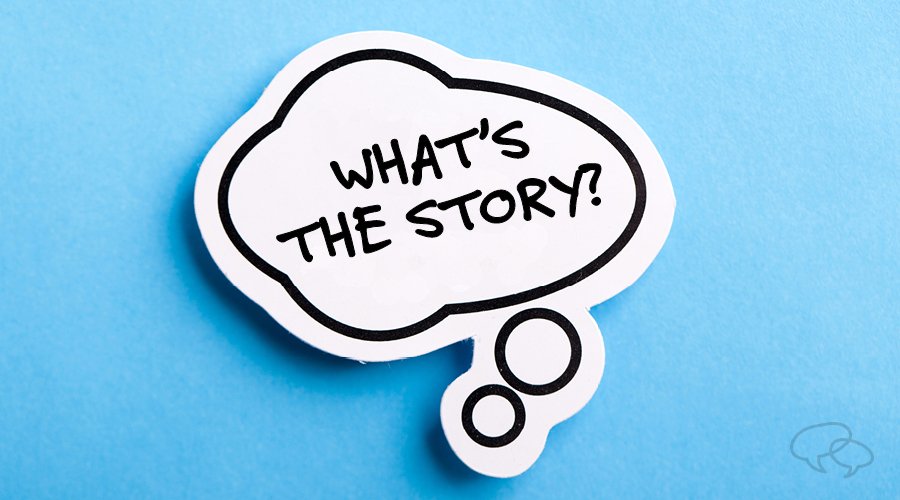Vaibhav, a fresh-faced graduate, stood at the precipice of his new career as a sales professional with a renowned firm. Excitement coursed through his veins, however, underneath the veneer of enthusiasm, a wave of apprehension washed over him. He knew that the path ahead would be riddled with challenges, and he wondered if he had what it took to excel in this competitive arena.
As the days turned into weeks, Vaibhav found himself confronted with the realities of the sales world. He faced rejection, struggled with unfamiliar sales techniques, and grappled with self-doubt. The pressure to meet targets weighed heavily on his shoulders, threatening to extinguish the flame of his initial excitement.
Amidst the storm of uncertainty, Vaibhav turned to his uncle, Sivaranjan, a seasoned professional with years of industry experience. Their bond went beyond familial ties; his uncle had always been a source of inspiration, someone, who understood the nuances of the sales landscape and could offer invaluable advice.
With each interaction, his uncle shared tales of triumphs and tribulations, providing a roadmap for Vaibhav’s journey. He imparted wisdom on the buying and selling process dynamics, the myths and facts about sales, the FAB model, understanding and meeting customer needs, the decision criteria in detail, the art of probing, and open and closed-ended questions.
Vaibhav, do you want to find out the key to the market as effectively as the first $1 trillion organization in history? —asked Siva.
Yes, uncle, I am curious, Vaibhav said immediately.
Curiosity piques when people are intrigued by your words, by your narrative, it may be nostalgic by evoking fond memories or could take them into the world that awaits them. In short, stories sell! It is as simple as that, Vaibhav — said Siva.
According to John Medina, “Our brain interprets every letter as a picture, so wordy slides literally choke our brain.”
Numbers don’t resonate with people until those numbers are placed in a context that people can understand. The best way to help them understand is to make those numbers relevant to something with which your customers are familiar.

When Steve Jobs introduced the iPod in 2001, he said—it has 5GB memory storage and he further broke it down by saying you could carry “a thousand songs in your pocket.”
Jobs always breaks down numbers to make them more interesting and meaningful.
Steve Jobs revolutionized the world of sales through his masterful use of storytelling. By creating emotional connections, painting compelling visions, demonstrating real-world impact, engaging in product narratives, and leveraging simplicity, he transformed the MacBook Air and iPod into iconic devices that captured the imagination of millions, Siva added.
Vaibhav, in the sales arena, where competition is fierce and customer attention is fleeting, the art of storytelling has emerged as a powerful tool for engagement and persuasion. Sales storytelling goes beyond a traditional sales pitch, transcending the mundane and forging emotional connections that leave a lasting impact on potential customers.
Today, we will explore the essence of sales storytelling and the remarkable power it holds to captivate audiences and drive sales, said Siva.
What Is Sales Storytelling?

“Stories are how we learn best. We absorb numbers and facts and details, but we keep them all glued into our heads with stories.”
—Chris Brogan, Author, Marketing Consultant, Journalist, and Speaker
It is a strategic approach that utilizes narratives to convey the value and benefits of a product or service. It involves crafting a compelling story that resonates with the audience on an emotional level, igniting their imagination and stirring their desires.
Vaibhav, storytelling can help you meet your sales targets promptly. People enjoy hearing about characters who face and conquer obstacles.
Telling your and others’ stories humanizes your selling and makes connections with prospects more meaningful (and effective). However, for some people, weaving a good story comes naturally, said Siva.
Chip and Dan Heath discovered a staggering statistic in their influential book ‘Make It Stick,’ where only five percent of people remember statistics, while 63 percent of people remember stories after a presentation, quoted Siva.
I have been hearing about ‘death by PowerPoint,’ when it comes to presentations, added Vaibhav.
Exactly my point, Vaibhav —said Siva.
People enjoy stories because they connect with them. When you tell a narrative, you reach out and make a personal and emotional connection. Stories provide your listener with insight into what motivates you, your “why,” rather than your “what.” Stories demonstrate that you are human and honest. People like and trust you because of your stories.
The trick is to develop a story that not only connects with your listener but also helps keep your product or service above your competition, explained Siva.
Uncle, now I am wondering, what about the sales pitch, which is the most emphasized term in sales? —asked Vaibhav thoughtfully.
Let’s understand the difference between a traditional sales pitch and storytelling and you will get your answer, said Siva.
The Disparity: Sales Pitch and Storytelling

SalesTech will never replace your marketing and sales team – People will buy from your story not from your sales tools.”
—Frenci Bardhi, Business Development Manager at LXA
Vaibhav, when it comes to sales, the attention goes to the direction of the newest and the shiniest details, however, we should not forget the foundation of sales that is running the show and is enhanced with the help of the latest technologies.
We are moving towards the era where we bring together technology and decades-old practices to build connections with others and relate to them on an emotional level. Today, we are emphasizing one of the oldest human past times—stories.
Sales storytelling is an art and a science. According to Hubspot, facts and statistics only activate two areas of your brain: language comprehension and language processing. Stories, on the other hand, activate seven senses: movement, touch, language processing, language understanding, fragrances, noises, and colors and forms, described Siva.
Storytelling makes presentations more conversational
Effective storytelling in sales goes beyond presenting facts and data. It involves creating a connection and engaging prospects by making them feel like the hero of the story. When presentations lack storytelling elements, they can feel one-sided and fail to resonate with the audience. Prospects need to be able to envision themselves within the narrative of your company or product to see its value.
By incorporating storytelling, you provide a personal touch that speaks directly to the individual, making them feel seen and understood. According to screenwriter Chad Hodge, “Good storytelling allows people to see themselves as the protagonist, fulfilling their desire to be the star or feel personally connected to the story.” Ultimately, storytelling helps bridge the gap between information and emotional engagement, increasing the likelihood of prospects buying your product or service.
Storytelling makes sales indelible
Engaging customers through storytelling not only enhances their memory retention but also helps establish a memorable and creative brand. Dr. Jerome Bruner, a cognitive psychologist, in his landmark book, Actual Minds, Possible Worlds, mentioned that when you tell a story about a fact, brand, or idea, people are 22 times more likely to remember it. Storytelling allows brands to resonate with their audience on a deeper level, creating a strong emotional connection.
Including case studies or customer testimonials in your storytelling strategy can provide tangible and relatable outcomes, leading to increased sales productivity and more effective product demonstrations. By incorporating characters and narratives into your pitch, you make it more compelling and captivating, moving beyond the monotony of presenting mere data and statistics.
Storytelling holds a powerful sway on the human brain
Storytelling has a profound impact on the human brain. While a sales pitch based solely on facts engages the logical part of the brain, it lacks an emotional connection and is easily forgotten. On the other hand, storytelling engages both the logical and emotional sides of the brain, creating a holistic experience for the listener.
This integration of logic, senses, and emotions triggers the release of oxytocin, known as the “trust hormone,” fostering a sense of connection and building trust between the storyteller and the listener. Trust is crucial for nurturing long-term customer relationships.
Furthermore, studies have demonstrated that storytelling can synchronize the brain activity of both the storyteller and the listener. When a speaker shares an emotionally impactful story, the listener’s brain reacts in a similar manner, experiencing the same series of emotions. This synchronization deepens the emotional connection between the two parties, enhancing the shared experience.
Vaibhav, if you are interested in creating a connection by weaving together elements of relatability, authenticity, and empathy, then you should go for the holistic approach of sales storytelling and tap into the emotional core of your customers, said Siva.
Yes, uncle, I will choose to align with my customers’ values and aspirations to seek meaningful connections rather than bombarding them with an overwhelming amount of information, said Vaibhav scratching his chin
Good, said Siva.
Let’s look at the impact of sales storytelling, added Siva while Vaibhav nodded.
Power Of Storytelling In Sales

“A good salesperson knows how to talk; a great salesperson knows how to tell a story.”
– Rivka Willick, story coach, and writer
Imagine, Vaibhav, you’re on a journey through a dense forest, navigating a winding path fraught with challenges and obstacles. Suddenly, a person emerges, offering to lead you through the treacherous terrain. Instead of bombarding you with a list of instructions and facts about the forest, the person captivates your attention with a gripping tale. They paint vivid imagery of their own adventures, recounting how they covered similar trails and reached their destination safely. As you listen, you can’t help but feel a connection to their experiences and a sense of trust in their expertise.
This is the power of storytelling in sales. It transcends the realm of cold, hard data and creates an emotional bond between the seller and the buyer. Instead of presenting a mere sales pitch filled with features and statistics, effective sales storytelling weaves a narrative that speaks to the customer’s desires, aspirations, and pain points, said Siva in an explanatory tone.
In the end, you have to have the ability to engage the customer’s emotions, build trust and make the product or service resonate on a deeper level, he added.
Vaibhav said thoughtfully, “It means I have to immerse customers in a narrative that captures their imagination, showcases real-life transformations, and ultimately drives them to choose the offerings.”
Yes, that’s correct, Vaibhav —said Siva.
Now that I understand the power and impact of storytelling on the sales process, I am looking forward to implementing it in my sales strategy. How do I do that, uncle? —asked Vaibhav.
We will cover it in our next meeting, said Siva.
https://leadwithastory.com/swas003/
https://www.xactlycorp.com/blog/motivational-sales-stories-inspiration
https://pipeline.zoominfo.com/sales/storytelling-in-sales
https://www.linkedin.com/pulse/power-storytelling-sales-edoardo-cannarsa
https://blog.hubspot.com/sales/storytelling-in-sales-netflix-worthy-narrative
https://www.lxahub.com/stories/how-to-use-storytelling-in-your-sales
https://www.vtiger.com/blog/wp-content/uploads/2021/01/Storytelling-in-sales-2-1.png
https://corporatevisions.com/wp-content/uploads/2020/08/WhatstheStory_BlogImage.jpg
https://www.as-sprzedazy.pl/template/ass/uploads/media/default/0001/01/thumb_981_default_big.jpeg
Written By: Jimmy Jain
Edited By: Afreen Fatima
Society of Design Thinking Professionals









